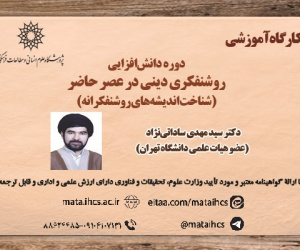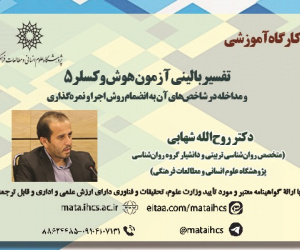تدوین چهارچوب راهبردی تاب آوری کالبدی در برابرخطر زلزله؛ نمونه موردی: منطقه 12 تهران (مقاله علمی وزارت علوم)
درجه علمی: نشریه علمی (وزارت علوم)
آرشیو
چکیده
پژوهش حاضر در نظر دارد به ارائه چهارچوب راهبردی، جهت ارزیابی ظرفیت تاب آوری کالبدی بپردازد. به همین منظور از ترکیب روش کیفی و کمی برای پیشبرد اهداف پژوهش استفاده شده است، به طوری که در بخش کیفی، به شناسایی شاخص ها با بهره گیری از مرور ادبیات پرداخته شده است و در بخش کمی نیز دسته بندی شاخص ها بر اساس اهمیت آن ها با استفاده از معادلات تفسیری ساختاری انجام شد و سپس، وزن نسبی هر یک از شاخص ها از طریق فرایند تحلیل شبکه تعیین شد. یافته های پژوهش، سیزده شاخص کلیدی را در سه گروه به ترتیب اولویت دسته بندی می نماید؛ به طوری که شاخص های «نسبت نزدیک ترین همسایه (Ĉ1)»، «میزان مستقیم بودن مسیر پیاده (Ĉ3)»، «نسبت استحکام غالب اسکلت ساختمان های موجود در هر بلوک (Ĉ4)»، «نسبت میانگین مساحت بلوک به طول بلوک (Ĉ5)» در گروه اولویت اول، شاخص «نسبت نوع خاک (در عمق 30-40 سانتی متری) به اندازه پاکت حجمی بلوک (Ĉ12)»در گروه اولویت دوم و بقیه شاخص ها در گروه اولویت سوم قرار می گیرند. بر اساس چهارچوب به دست آمده، دو محله بازار و هرندی در منطقه دوازده شهر تهران مورد بررسی قرار گرفت. نتایج کلی نشان می دهد که 93/85 درصد بافت محله بازار و 36/79 درصد محله هرندی، با در نظر گرفتن زلزله 6 مرکالی، در شرایط با تاب آوری بسیارکم قرار دارند. نهایتاً، سیاست های پیشنهادی براساس شاخص هایی با بیشترین وزن نسبی ارائه شد که می تواند به تصمیم گیرندگان شهری بینشی شفاف تر در جهت آمادگی در مدیریت بحران ارائه دهد.Developing a Strategic Framework for Physical Resilience Against Earthquake Risk (Case Study: District 12, Tehran)
The primary objective of the current study is to develop a strategic framework for assessing the capacity of physical resilience. To achieve this, a combination of qualitative and quantitative methods was employed. In the qualitative phase, indicators were identified through a thorough literature review, while in the quantitative phase, these indicators were categorized based on their significance using structural interpretation equations. The relative weight of each index was then determined through network analysis. The research findings classify thirteen key indicators into three priority groups. Notably, indicators such as "the ratio of the nearest neighbor," "the degree of straightness of the pedestrian path," "the ratio of the dominant strength of the skeleton of the buildings in each block," and "the ratio of the average area of the block to the length of the block" belong to the first priority group. The index "soil type ratio (at a depth of 30-40 cm) to the volume envelope size of the block" falls into the second priority group, while the remaining indicators are in the third priority group. The study focused on two neighborhoods, Bazar and Harandi in the district 12 of Tehran, and the results indicate that both neighborhoods have very low resilience levels (85.93% for Bazar and 79.36% for Harandi) in the face of a Mercalli 6 earthquake. Finally, the study proposes policies based on indicators with the highest relative weight, aiming to provide city decision-makers with valuable insights for crisis management preparedness.







